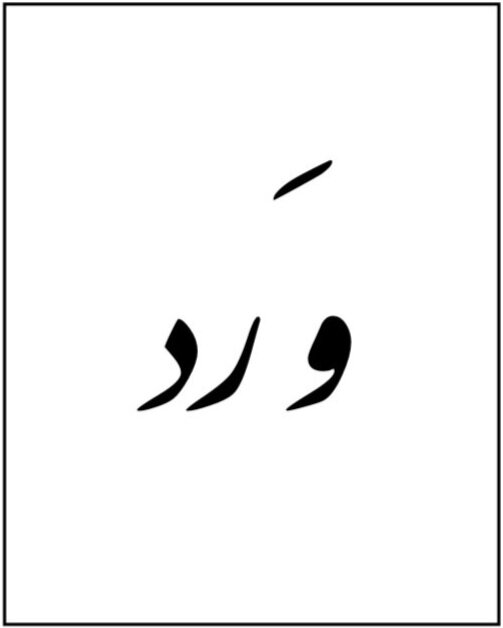Riyadh Fonts: An Interview With Norah Almuqhim
Portrait of Norah Almuqhim
Norah Almuqhim is the founder and manager of Riyadh City Fonts Archive, which documents and introduces the city of Riyadh through its street and store signs. The team behind this initiative involves and includes everyone, especially those interested in local and visual cultures. Almuqhim captures, edits, and analyzes all images before publishing it on her platform, following a holistic methodology that stems from Riyadh’s residents’ gaze and experiences.
When and why did you found this initiative?
I founded the Riyadh City Fonts Archive in 2021. I was working in the heart of Riyadh then, Al Malaz to be specific. I always noticed the KAKI store sign on Al Washm Street on my daily commute, as well as other unique signs. One day, I decided to document all the signs that I saw, knowing they might not be there in the future. This was the first step I took to build this initiative, hoping to preserve the city’s cultural and artistic identities for generations to come.
KAKI store sign and font
Why fonts?
I focused on fonts since they’re integral in forming the visual identity of any city and expressing its culture and history. Not only do fonts convey information, but they also carry stories of the city’s history, physical space, and daily routines.
We focus on documenting Arabic stores and street signs, which reflects the significance of the Arabic language to the city’s identity. These fonts aren’t traditional — they evolved independent from standard and known rules and styles. They’re innovative in form and design and show the city’s and its inhabitants’ taste, which makes them distinct from fonts dedicated to academia.
Documenting fonts is part of preserving our cultural heritage, where we simultaneously celebrate visual arts and record the social and economic changes Riyadh has experienced. I want to share such stories through this account to inspire discourse highlighting the importance of visual arts in shaping the collective identity of Riyadh.
Al Malaz Municipality Garage sign and font
How do you document and archive fonts?
Simplicity is at the core of our methodology, which enables anyone to contribute to our archive. I use photography to capture different fonts and later enhance and edit them using design software, such as Adobe Photoshop. Our eyes, and how they view Riyadh, remain the most crucial part to our process. Their experiences and observations enrich this project tremendously.
What is the importance of documenting fonts, as well as other visual identities?
Documenting fonts is vital for many reasons. First, documentation is the first step of preserving cultural heritage — every sign and font is part of the city’s history and its residents’ stories. This will allow future generations to connect with Riyadh through our lens. Second, documenting Arabic fonts raises awareness about the significance of visual arts, which encourages people to engage with it. It exposes people to different design styles that reflect changes in society. This is really helpful to young designers who are looking for inspiration to innovate new styles. Moreover, documenting fonts highlights the role language plays in shaping cultural identity. Fonts represent our values and writing styles through various aesthetics. Hence, archiving them in our rapidly developing world ensures they are not lost.
Documenting fonts also contributes to enhancing tourism since our account can act as a guide for places art and history enthusiasts can visit when they’re in Riyadh. This enriches local economies through Riyadh’s rich history of art and culture.
This isn’t an exclusively artistic process or methodology. It’s a community effort to both preserve and connect people to our cultural identity, which helps build a community proud and rooted in its history.
Riyadh Bank sign and font







